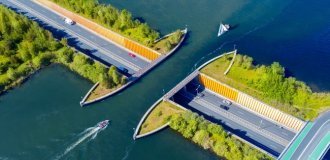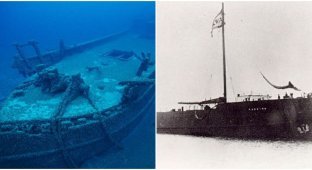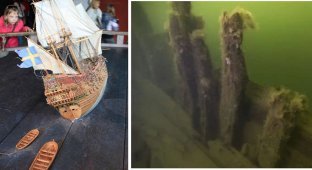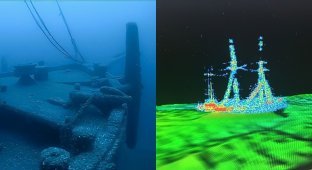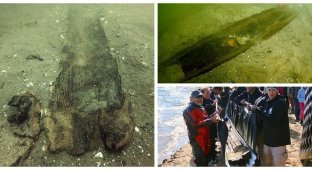Mysterious holes found at the bottom of one of the Great Lakes (4 photos)
While mapping the area of Lake Michigan (USA), where at least 36 shipwrecks have occurred, researchers have come across unusual holes. They are located at a depth of more than a hundred meters under water. 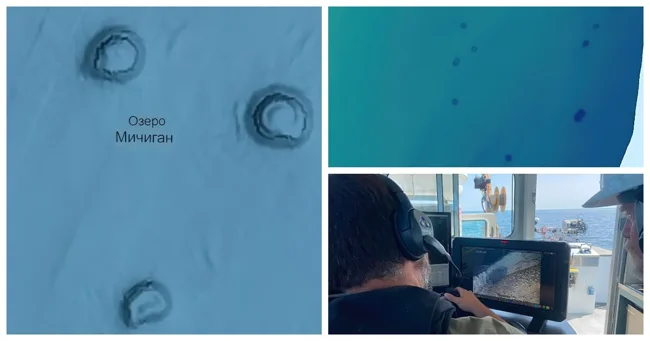
Scientists are in no hurry to classify these strange holes as funnels that were previously discovered in neighboring Lake Huron, and suggest that they are more like craters.
At the moment, 40 craters have been found on the bottom of Lake Michigan, the diameter of which ranges from 150 to 300 meters. Scientists believe that further study of these formations may shed light on the processes that contributed to the conditions favorable for the emergence and maintenance of life on Earth. 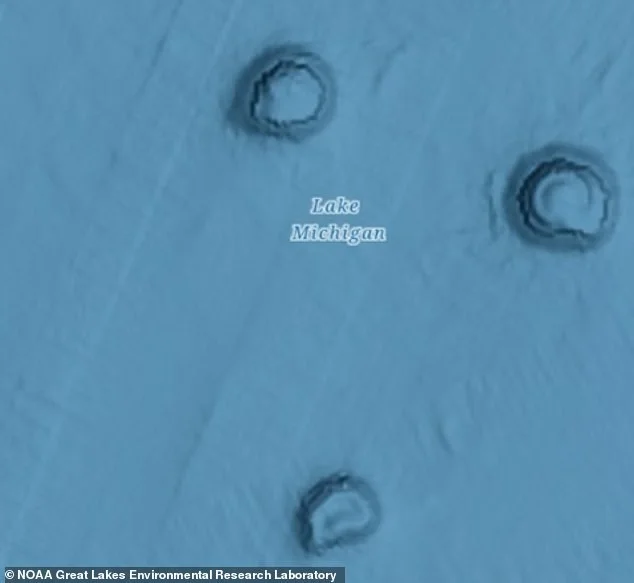
The giant holes in the bottom of Lake Michigan were first discovered two years ago in sonar images. Recent studies have confirmed that they are natural and not man-made.
On August 21, scientists from the Great Lakes Environmental Research Laboratory (GLERL) surveyed the lake bottom using a remotely operated vehicle. This allowed them to confirm that the holes they discovered were massive natural craters, each about the size of an Olympic swimming pool.
Kevin Cullen, director of the Wisconsin Maritime Museum, said the discovery of the craters at the bottom of Lake Michigan opens up a new avenue of geological research. “How did they form? Why are they there, especially in bedrock?” are some of the questions he asks.
The craters were found 445 feet (137 meters) below the surface, about 14 miles (22 kilometers) southeast of Sheboygan, Wisconsin. They extend south toward the Wisconsin Shipwreck Coast National Marine Sanctuary. While scientists have found 40 of these craters so far, they believe there may be more.
Russ Green, a marine archaeologist and GLERL superintendent, said any new discovery in the Great Lakes is exciting. “But these features really stand out — they’re deep — and as far as we can tell, they haven’t been known about before,” he told Live Science. 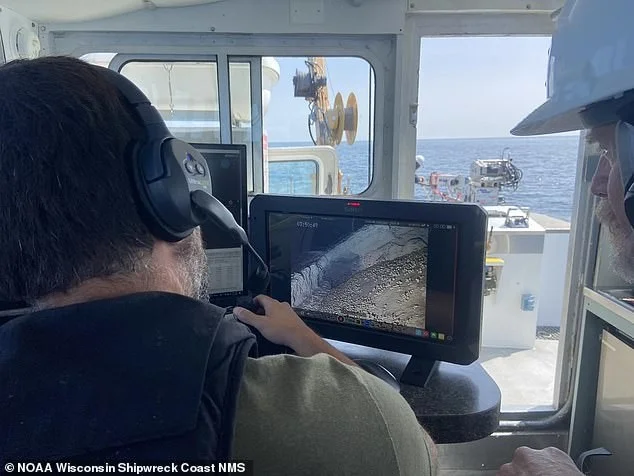
Part of Lake Michigan sits on limestone, which makes it possible for sinkholes like the ones in Lake Huron to form. Limestone can create sinkholes when it dissolves and cracks, allowing the land above it to collapse or fall into the resulting cavities.
However, researchers are hesitant to call the depressions they found sinkholes until they conduct more research. Brandon Baylod, a local shipwreck hunter who also discovered several of the depressions, suggested that they might be more accurately described as craters, formed in deep sediment by upwelling water or hydrocarbon gases. 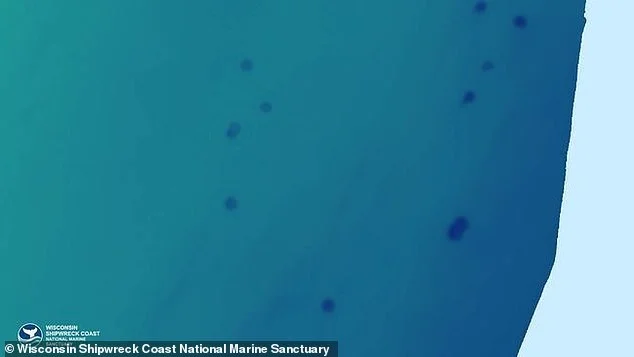
Scientists note that it is not yet known when or how the craters discovered at the bottom of Lake Michigan formed. However, the depressions create conditions so extreme that they may resemble early conditions on Earth, with limited oxygen and high sulfur content. Such an environment is unique and could help scientists better understand how the Earth evolved before oxygen appeared.
As University of Michigan professor and director of the Cooperative Institute for Great Lakes Research Greg Dick told the Milwaukee Journal Sentinel, “We usually have to go to Antarctica or Yellowstone National Park or other exotic places to see extreme ecosystems, but here in the Great Lakes, we have them right under our noses.”
Scientists point out that very little is known about the Great Lakes — only about 15 percent of the five lake beds have been mapped. Russ Green, a marine archaeologist and GLERL superintendent, told Live Science of the craters, “We’ll be studying them for years to come to understand how they got there and what role they play in the Lake Michigan ecosystem.”









